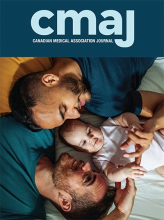In their 2020 review of Ontario’s long-term care (LTC) homes during the first wave of the COVID-19 pandemic, Stall and colleagues1 noted that homes with for-profit status had higher rates of SARS-CoV-2 infections and deaths among residents, but not an increased likelihood of outbreaks. Although the authors themselves are measured about the application of their findings, others are more willing to draw conclusions about public policy implications. In a CMAJ commentary, McGregor and Harrington2 mused, “If requirements to fund adequate levels of staffing affect the bottom lines of for-profit facilities, then it might be time for this care to be turned over to public and nonprofit entities.” Other groups go further. Doctors for Justice in LTC have specifically called for an end to for-profit management of LTC homes,3 and the federal New Democratic Party made ending for-profit LTC part of its political platform.4
Stall and colleagues’ interpretation of their findings noted that “all comparisons favoured municipal homes, which generally operate with the support of municipal contributions and benefits that allow for greater staffing levels and capital expenditures.” This comment has perhaps been overlooked. I substantiated this conclusion using data from a cluster of counties in southwestern Ontario for the 2020 budget year (unpublished data). For all municipally or regionally funded LTC homes, expenditures exceeded revenues from provincial funding and resident user fees, requiring local government subsidy to pay for 15.9%–36.5% of budgeted expenses.
A fundamental inequity exists when local government tax revenue is used to subsidize only a specific subset of LTC beds in a community, a concern that was articulated in the recent government-commissioned report on COVID-19 in Ontario’s LTC homes.5 A simple solution to this problem would be to equalize the funding available to all LTC facilities, either by eliminating local subsidies or by requiring that a subsidy apply to all homes in a particular jurisdiction. It is unlikely that municipal or regional governments will be keen on designating additional budget resources for the operations of large, for-profit corporations; at the same time, it would be legitimate to protest that eliminating local support “lowers the bar” to a level that has been associated with inferior care. The alternative is to pressure provincial governments for sufficient funding levels to achieve a collective standard for residents of LTC. Only then will there truly be “justice in long-term care.”
Footnotes
Competing interests: Joel Wohlgemut is the medical director of a long-term care home operated by Sienna Senior Living (for-profit).
This is an Open Access article distributed in accordance with the terms of the Creative Commons Attribution (CC BY-NC-ND 4.0) licence, which permits use, distribution and reproduction in any medium, provided that the original publication is properly cited, the use is noncommercial (i.e., research or educational use), and no modifications or adaptations are made. See: https://creativecommons.org/licenses/by-nc-nd/4.0/











